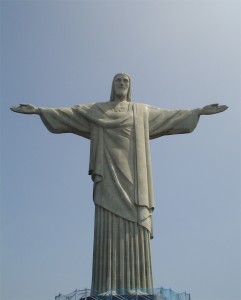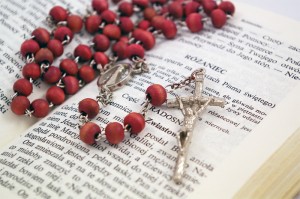 The funeral traditions of the Spanish-speaking cultures are similar, but have many differences and variations from each other. For the purpose of this article, we are generalizing the similarities of customs rooted in Hispanic cultures to give you a brief description of what to expect at a Hispanic Funeral.
The funeral traditions of the Spanish-speaking cultures are similar, but have many differences and variations from each other. For the purpose of this article, we are generalizing the similarities of customs rooted in Hispanic cultures to give you a brief description of what to expect at a Hispanic Funeral.
Hispanic Funeral Traditions Are Primarily Catholic
Because of the how deeply-rooted Catholicism is in Hispanic heritages, even non-Catholics include Catholic traditions in their funerals.
The Hispanic culture accepts death as part of life. It is the end of the life in the flesh, and a beginning of the life in spirit. Catholic Hispanics celebrate one’s death, because the soul is going “home” once the body has died. The funeral process doesn’t begin after death, but before one passes.
- Whenever the situation allows, the funeral process begins on the death-bed. A priest will give the dying person their Last Rites, which consist of confession (if possible), communion and pastoral blessing.
- A family member will stay with the body of the deceased until the preparations begin for the funeral services.
- A traditional Hispanic Funeral will consist of 3-4 days of services and vigils to honor and pray for the departed soul.
- A Catholic Priest will lead the services for the funeral. Starting with the wake.
The Wake
A wake is a time for family and friends to gather in the presence of the deceased (also known as visitation or a viewing). It is usually held at the funeral home or a church. It’s a time to join together, share memories, pray, and pay respects. Often times, families will arrange for food to be served in a separate room or site.
A Rosary might be said in honor of the deceased. This is a tradition that is very common, but not always practiced. The Rosary will be held in a Catholic church and led by a priest. Anyone is welcome to come. Mourners will enter in silence, kneel and follow along with the Rosary. Once finished, the mourners will then leave in silence as well.
The Funeral Service
The funeral will take place the day after the wake. This service will be a full mass said in honor and celebration of the deceased life. Several readings, prayers, songs and a homily is said. Communion will also be taken during the funeral mass. Flowers, personal items and gifts will rest on top of the casket, as a sign of love from family members.
Everyone is welcome to the funeral mass. If you are not Catholic, simply follow along with the standing and sitting and, if you wish, kneeling as well. There will be a chance for family and friends to light a candle in honor of their loved one.
The Burial
Most traditional Hispanic-Catholic funerals will have the same burial etiquette as other Catholic funerals. There will be a procession to the cemetery, Once the casket has been lowered, family members will be able to throw a handful of earth into the grave. Often times, family and close friends will read a eulogy at this time, or say a few personal words in respect.
The cemetery is a place of great pride for traditional Hispanic cultures. The name for a cemetery is Campo Santo meaning Holy Field. Candles and large flower tributes are used to decorate graves.
After the Burial there is often a reception or luncheon for friends and family to come together once more in honor of the deceased. These get-togethers are great comfort to the family in grief. It is a time to begin the healing process.
The Following 9 Days
Family members of the deceased light candles at the altar of their church for the 9 days after the funeral service. When lighting the candles, the family and friends will offer many prayers for the soul of the departed.
Other Hispanic Funeral Traditions
- Traditionally, women wear black and do not go out in public other than to the church services during the days of mourning.
- An anniversary of death is also a special occasion. A mass is said in honor of the deceased. Invitations are sent and a reception typically follows at the family’s home.
- November 2nd is All Souls’ Day. This is a very special day in the Hispanic culture, a day of respect to all of those who have passed. On this day candles will be lit on at the gravesites of loved ones; wreaths, flowers, rosaries and gifts are also displayed on the tombstones. Relatives will sit at the grave from sunrise to sunset in prayer. Fruit, flowers and food are sold by vendors that surround the cemeteries.
Tags: Funeral Etiquette, Funeral Services, Funeral Traditions, Memorial Service, Visitation
